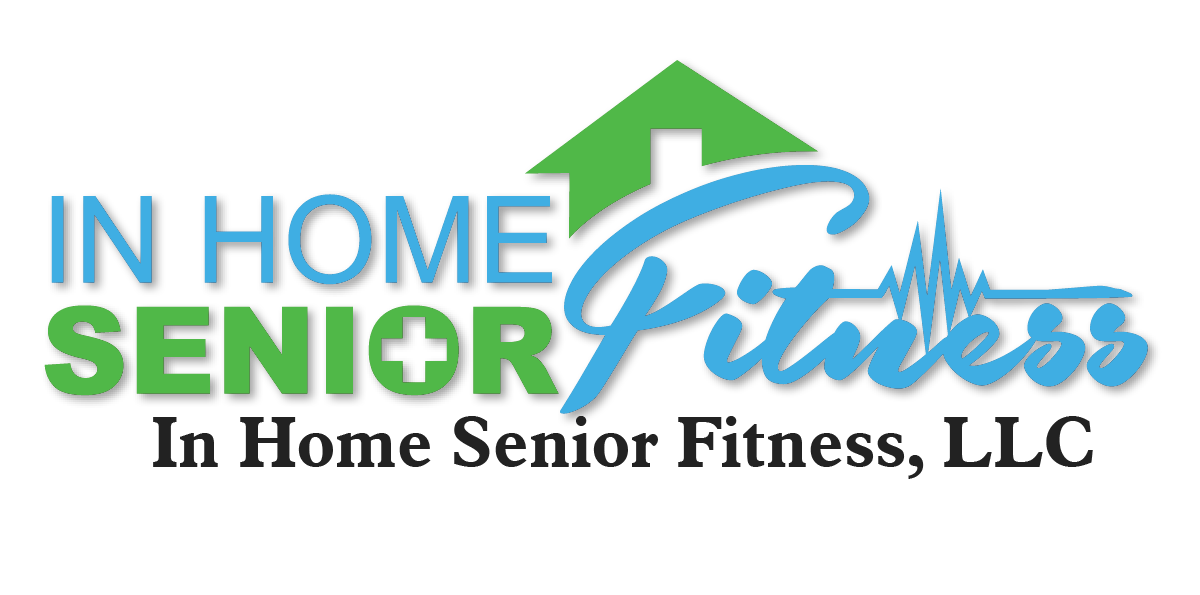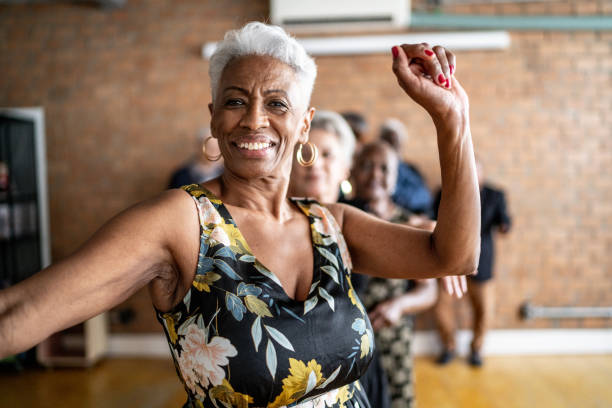As we age, staying active becomes increasingly important for maintaining overall health and well-being. Dance exercises offer a fun and engaging way for seniors to stay fit while enjoying the rhythm and movement of different dance styles. Whether you’re a senior looking to start a new fitness routine or a caregiver seeking activities for a loved one, this guide covers everything you need to know about dance exercise styles for seniors.
In addition to In Home Senior Fitness’ personalized sessions, dancing is an activity many enjoy for not only physical but also emotional benefits. Your In Home Senior Fitness trainer can assess your balance and help make progress or adjustments required to participate safely in various dancing activities.
Benefits of Dance Exercise for Seniors
Physical Benefits
Dance exercises provide numerous physical benefits that help seniors maintain their health:
- Improved Cardiovascular Health: Regular dance sessions can enhance heart health and improve circulation, reducing the risk of heart disease and stroke. The aerobic nature of dance exercises helps to strengthen the heart and lungs, promoting overall cardiovascular fitness.
- Enhanced Flexibility and Balance: Dancing involves various movements that improve flexibility and balance, helping to prevent falls and injuries. This is particularly important for seniors, as falls are a leading cause of injury in older adults.
- Increased Strength and Stamina: Dancing builds muscle strength and endurance, which are crucial for daily activities. The repetitive movements in dance help to tone muscles, increase joint mobility, and improve overall physical stamina.
Mental Benefits
Dancing also offers significant mental health benefits:
- Reduced Stress and Anxiety: The rhythmic movements and music can be incredibly relaxing, helping to alleviate stress and anxiety. Engaging in dance can be a great way to escape daily worries and focus on the joy of movement.
- Improved Cognitive Function: Learning dance routines stimulates the brain, enhancing memory and cognitive abilities. Research has shown that dancing can help delay the onset of dementia and other cognitive decline conditions by keeping the mind sharp and active.
- Social Interaction and Enjoyment: Dancing is a social activity that encourages interaction with others, reducing feelings of loneliness and isolation. Participating in dance classes or groups fosters a sense of community and belonging, which is essential for emotional well-being.
Types of Dance Exercises for Seniors
Here are some popular dance styles that are particularly suited for seniors:
1. Ballroom Dancing
Ballroom dancing includes styles like the waltz, tango, and foxtrot. It’s excellent for improving coordination and balance and is often done with a partner or caregiver, making it a social activity. Ballroom dancing helps to strengthen core muscles and improve posture while providing an opportunity for close social interaction and connection.
2. Line Dancing
Line dancing involves choreographed steps that are performed in unison by a group. It’s easy to learn and great for solo dancers. It improves memory, coordination, and provides a good cardiovascular workout. Line dancing is often performed to country music, but it can be adapted to various musical genres, making it a versatile and enjoyable activity.
3. Zumba Gold
Zumba Gold is a modified version of Zumba designed specifically for seniors. It includes easy-to-follow dance moves set to upbeat music, offering a fun way to improve cardiovascular health and overall fitness. Zumba Gold routines are low-impact, focusing on improving flexibility, range of motion, and overall mobility while ensuring a fun and engaging workout.
4. Tap Dancing
Tap dancing involves rhythmic footwork that produces tapping sounds. It’s a fun way to improve coordination, balance, and lower body strength. Tap dancing can be adapted to suit different fitness levels and is excellent for enhancing leg strength and cardiovascular health while providing a rhythmic and enjoyable workout.
5. Ballet
Ballet is gentle on the joints and focuses on posture, flexibility, and balance. It’s excellent for improving muscle tone and core strength. Ballet exercises often involve slow, controlled movements that enhance muscle endurance and joint stability, making it an ideal choice for seniors seeking a low-impact yet effective workout.
6. Belly Dance
Belly dancing emphasizes core strength and flexibility. The gentle, flowing movements are easy on the body and excellent for enhancing abdominal and back muscles. Belly dance promotes body awareness and control, improving posture and reducing back pain. It’s also a fun and expressive form of exercise that can boost self-confidence.
7. Jazz Dance
Jazz dance is energetic and vibrant, incorporating various styles and movements. It’s great for cardiovascular health, flexibility, and coordination. Jazz dance routines often include a mix of sharp, precise movements and fluid, expressive steps, making it a dynamic and enjoyable workout that challenges both the body and mind.
8. Hip Hop
Hip hop dance offers modern, high-energy moves that are both fun and physically demanding. It helps improve cardiovascular health, strength, and coordination. Hip hop dance routines can be adapted to suit different fitness levels, making it accessible for seniors while providing a contemporary and engaging form of exercise.
9. Salsa Dance
Salsa dancing features Latin rhythms and is typically done with a partner. It’s a fantastic way to improve coordination, balance, and cardiovascular health. Salsa dancing is lively and rhythmic, encouraging fluid movements that enhance joint flexibility and muscle strength while providing a social and enjoyable workout.
10. Square Dance
Square dancing is a social dance involving groups of four couples. It improves coordination, balance, and provides an opportunity for social interaction. Square dance routines are often performed to lively, traditional music, making it a fun and engaging activity that promotes physical fitness and social bonding.
Getting Started with Dance Exercise
Choosing the Right Type of Dance
When selecting a dance style, consider your interests, fitness level, and any health conditions. It’s essential to choose a style that you enjoy and can perform comfortably. Trying out different styles can help you find the perfect fit, whether you prefer the elegance of ballroom dancing or the high-energy moves of Zumba Gold.
Finding Classes or Groups
Look for local community centers, senior centers, fitness programs, or dance studios that offer classes for seniors. Many online resources also provide virtual dance classes, making it easy to get started from the comfort of your home. Virtual classes can be a convenient and flexible option, allowing you to learn at your own pace and schedule.
Tips for Safe Dance Exercise
To ensure a safe and enjoyable experience, keep these tips in mind:
- Consult with a Healthcare Provider: Before starting any new exercise routine, it’s crucial to consult with a healthcare provider, especially if you have any pre-existing health conditions. They can provide guidance on which dance styles are appropriate and any precautions you should take.
- Warm-Up and Cool-Down: Always start with a warm-up to prepare your muscles and joints and finish with a cool-down to reduce muscle soreness. Simple stretches and gentle movements can help prevent injuries and improve flexibility.
- Wear Appropriate Footwear and Clothing: Choose comfortable clothing that allows for easy movement, and wear supportive footwear to protect your feet and joints. Proper footwear is essential for preventing injuries and ensuring comfort during dance sessions.
- Stay Hydrated: Drink plenty of water before, during, and after your dance session to stay hydrated. Dehydration can affect your energy levels and overall performance, so it’s important to maintain adequate fluid intake.
- Listen to Your Body: Pay attention to how your body feels and avoid overexertion. Take breaks when needed and adjust the intensity of the exercise as required. It’s important to recognize your limits and progress at a pace that feels comfortable for you.
Conclusion
Dance exercises are a fantastic way for seniors to stay fit, healthy, and happy. With various styles to choose from, there’s something for everyone, regardless of fitness level or experience. By incorporating dance into your routine, you can enjoy numerous physical and mental health benefits while having fun and socializing. So put on your dancing shoes and start moving to the rhythm!
Pat Baker has experience as a caregiver, enjoys dance exercise, and writes for caregiver agencies in the Philadelphia area.

